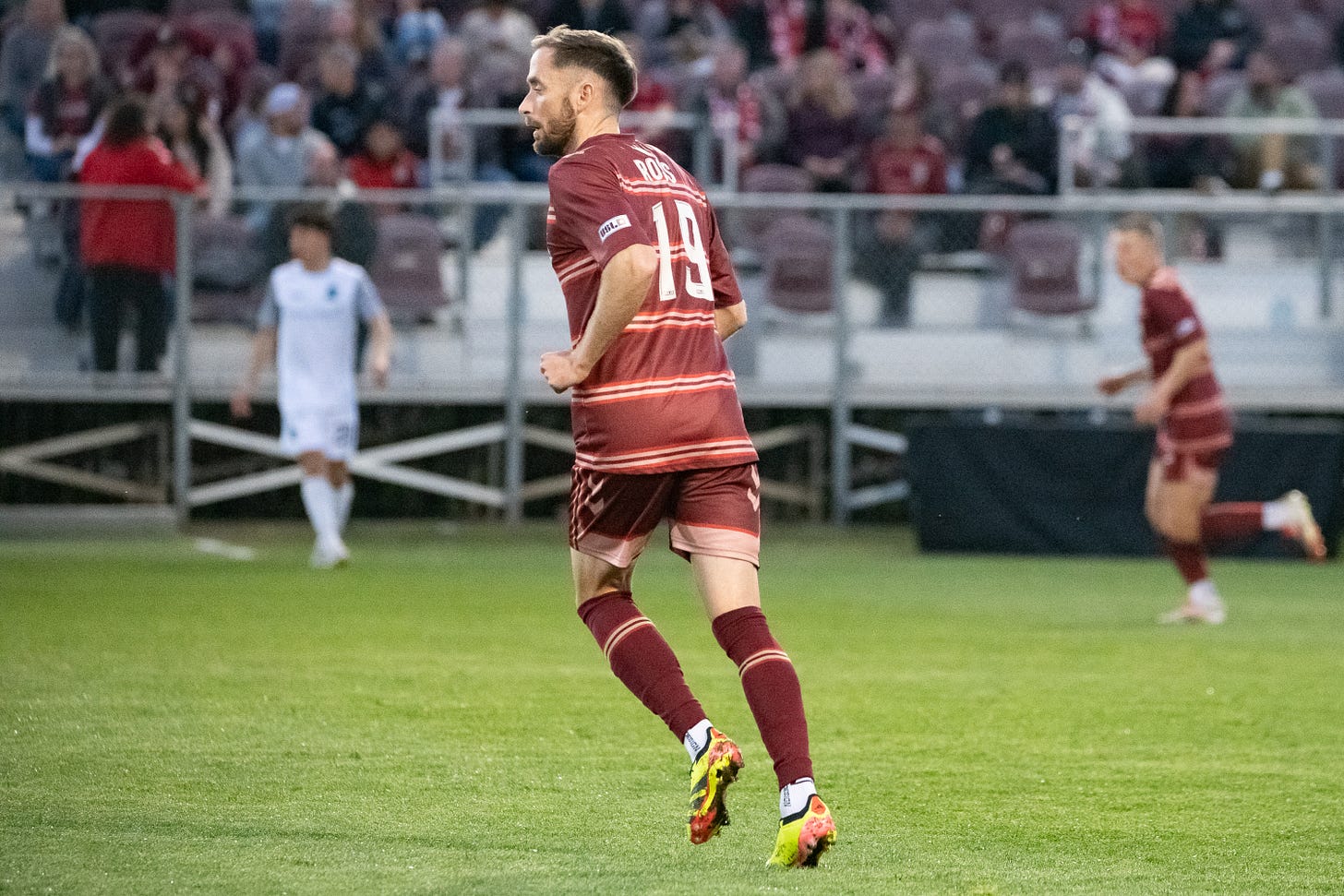Cards, Chaos, and Confusion: Republic FC Outdone by Tulsa and the Whistle
On a night when Sacramento Republic FC had every reason to keep their home streak alive, it was not a moment of brilliance or tactical superiority that settled things—it was one early counterattack, 90 minutes of questionable officiating, and a whole lot of whistles.
Saturday night’s 1-0 loss to FC Tulsa at Heart Health Park did not just snap Republic FC’s eight-match unbeaten home run—it tested the patience of players, coaches, and fans alike. And while there’s plenty of soccer to dissect, let’s be honest: most of the match was overshadowed by a referee performance that can best be described as “experimental.”
It did not take long for things to get sideways. Just 10 minutes in, Sacramento was caught pressing high when Tulsa flipped the script. Jamie Webber found Kalil ElMedkhar in space on the break, and before the crowd had even settled into their seats, the visitors were up 1-0. It would be the only goal of the match—and the only thing FC Tulsa really needed, given the way the game unfolded from there.
To their credit, Sacramento responded with energy and control. They dominated possession (68%) and racked up eight corner kicks, but turned all that control into just one shot on target. That’s not a typo—one. Tulsa parked the bus early, left the engine running, and dared Republic to break them down. They could not.
Jack Gurr and Ryan Spaulding did what they could to stretch the field. Luis Felipe and Rodrigo López were brought in to inject some urgency, and Trevor Amann was called on to muscle through the packed Tulsa defense. But the finishing touch simply never arrived. The best moment came in the form of a defensive save—Danny Vitiello’s snap reaction to prevent a misplayed cross from becoming an own goal in the 36th minute.
That Vitiello highlight doubled as a metaphor for the night: the team’s most critical play came from trying to clean up a mess they did not create.
Now, we cannot talk about this match without addressing the real star of the show: referee Elijio Arreguin. In what might go down as the most performative officiating display of the season, Arreguin turned the match into a masterclass in inconsistent game management.
Tulsa, always eager to embrace a little gamesmanship, leaned in hard. Every bump, every brush of contact, every hint of pressure resulted in a dramatic fall and a pleading glance toward the official. And wouldn’t you know it—the whistles came.
Cards flew like they were being handed out at a blackjack table. Seven yellow cards in total, including two for Tulsa’s Owen Damm (who was finally sent off in the 86th minute), and a red card to the Tulsa bench in stoppage time for good measure. At times, it felt less like a professional soccer match and more like the theatrical portion of a high school referee workshop.
Meanwhile, Republic FC could not catch a break. Fouls were called based on vibes, advantage was a foreign concept, and Sacramento’s growing frustration was met not with understanding—but with even more whistles.
It was not just bad officiating. It was creatively bad officiating. It was “choose your own adventure” refereeing. And it fundamentally shaped the rhythm—or lack thereof—of the entire match.
This is not the end of the world for Republic FC, of course. One loss does not erase a strong start to the season or the momentum they have built at Heart Health Park. But it does serve as a reminder that controlling possession and “looking dangerous” is not enough without a cutting edge in the final third.
It also begs a bigger question: how does a team like Sacramento adapt when a match spirals into chaos? Because if USL officials continue to officiate games like interpretive dance sessions, then calm, clinical finishing might be more important than ever.
Republic FC will now look ahead to their next fixture with a chance to regroup and recover. But you can bet they will be hoping for less drama, fewer whistles, and maybe, just maybe, a match decided by the players on the field rather than the man with the whistle.




Great summary. My biggest concern, even though Tulsa parked the bus, was that our defenders had more shots than our midfield and forwards combined
Thanks for a great write-up. I've only watched a few games this year but "controlling possession and 'looking dangerous' is not enough without a cutting edge in the final third" is an excellent summary of what I've seen from the team.